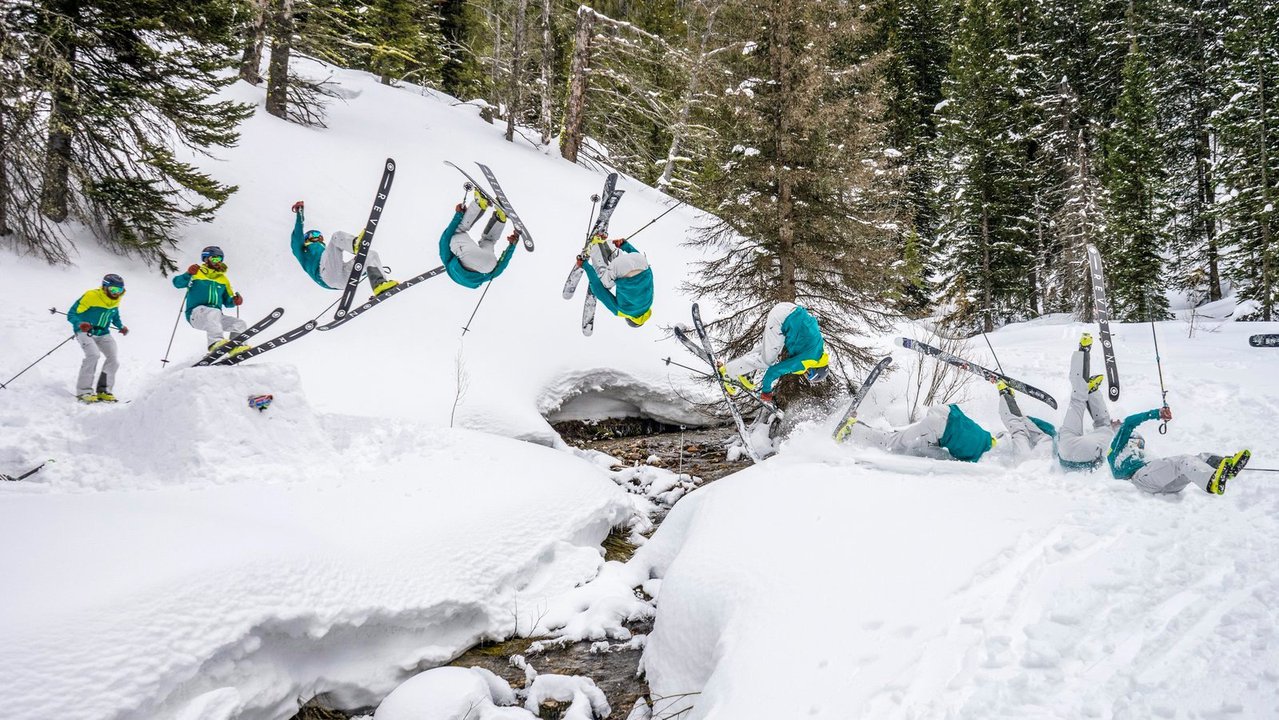When was the last time you crashed? Not just an awkward hockey stop that ended up with you sitting in the snow, or a low speed hip check on a runout. No, when was the last time you well and truly lost control and bounced around while gravity had her way with you? Last January I found myself unable to remember my last big, bold crash. I used to crash a lot on skis. I used to have three or four double ejects, along with the occasional lost goggles or pole every time I went skiing. These days it’s rare to have three or four of those a season.
That’s not to say I don’t fall. I end up laying down in the snow after messing up very often. But I don’t full-on crash anywhere near as much as I used to. That’s sort of to be expected. As we progress at skiers we get better at the techniques that keep us on our feet. If I was still crashing for the same reasons I used to (crossed tips, a mogul that looked scary, too deep of snow) it would indicate that I haven’t progressed much as a skier. So it’s nice to be able to ski a full day without the sort of tumbling fall that leads to big wads of snow in your base layers.
But, on the flipside, there’s a lot to be learned from crashing. The ease and relative comfort of crashing on skis was part of what drew me to the sport initially. I had a background in basketball and lacrosse. Both sports involve plenty of diving, hitting, generally crashing into other people and the ground. But those hits were never forgiving, that brief moment of surrender, of full commitment to whatever move I was trying to accomplish was always rewarded by pain. Usually some floor burns, often an injury or two, many of which still nag me.
When I started skiing, I realized I could experience that same freedom, that same blind step into the unknown, trying something I wasn’t sure was possible, and instead of hardwood floors or an aluminum stick signaling my failure, I could crater into deep, soft snow. Skiing was the first time I got to push myself without immediate and painful physical consequences. In highschool basketball or lacrosse, if you fall down a lot, you’re going to get made fun of, and probably will get hurt. In skiing, it’s sort of the norm.
I embraced crashing for those first few years. I was always down to ski off a new cliff, try a new trick, see if I could maybe go upside down in the air. And then, slowly something changed. I got better at skiing, and as I got better, the boundaries of my abilities became more apparent. Instead of trying everything because I had no idea what was possible, I honed in on a few core things that I knew were in my wheelhouse.
Along with that, the kind of skiing I was doing became more consequential. Backcountry partners look at you ascance when you crash a lot. It’s a liability to the whole group. I got roped into skiing lines where crashing could spell the end of my life. So I focused on not crashing. And that focus carried into my day-to-day resort skiing. My average speed around the mountain decreased, I sent big moves less often, and my tricks stagnated.
Maybe that’s just part of growing up, but I decided last spring that I’m done with this mindset. Sure, I’ll still play it safe in the backcountry, and my knees are too creaky to send big hucks to icy flats, but I’m going to make a point of crashing more this winter. I’m gonna chase the freeride kids around and try to make some of their creative natural gaps that are littered around our hill. I’m going to build more booters into pow, and try to get a few new tricks. I’m going to do things that are more likely to end with me tomahawking down the fall line, leaving a trail of jettisoned gear behind me. I’m going to crash more this winter, because it’s part of what made me fall in love with skiing in the first place. Come crash with me! But if you don’t mind, can you grab my ski from up there where it ejected on your way?


Comments